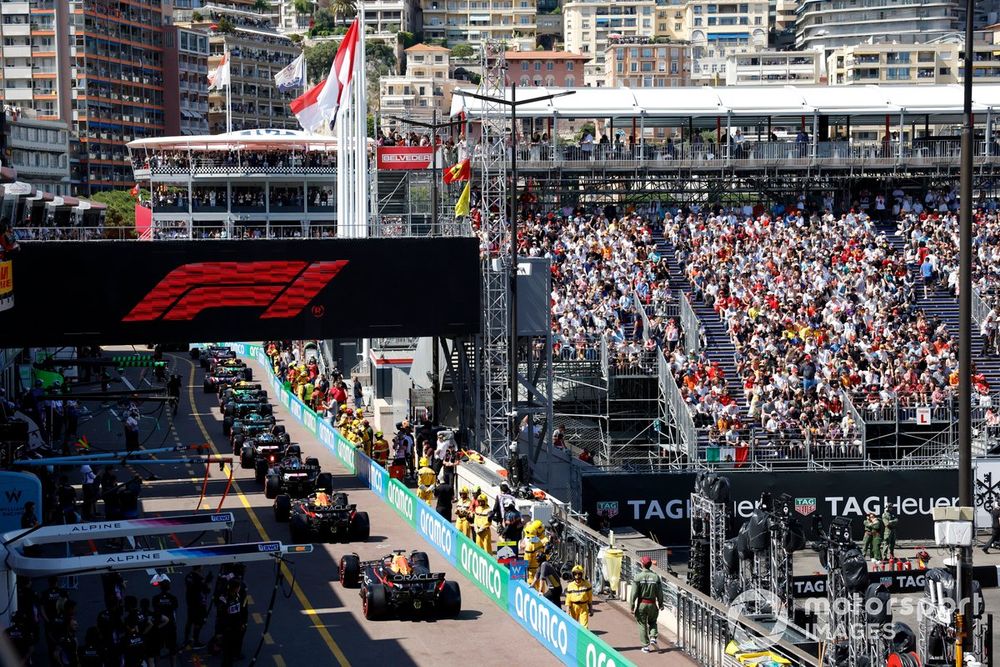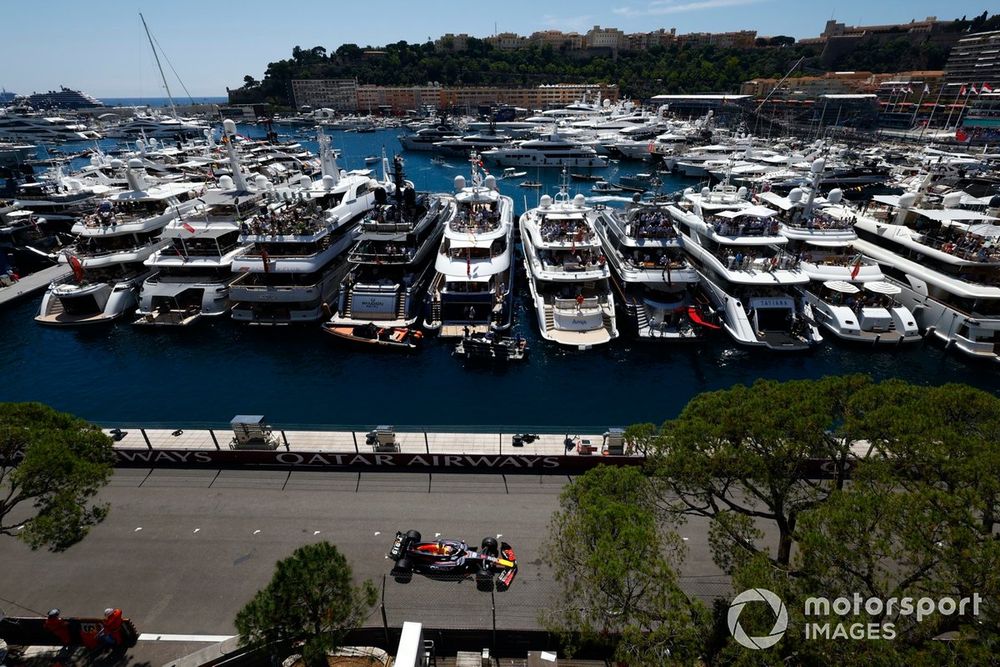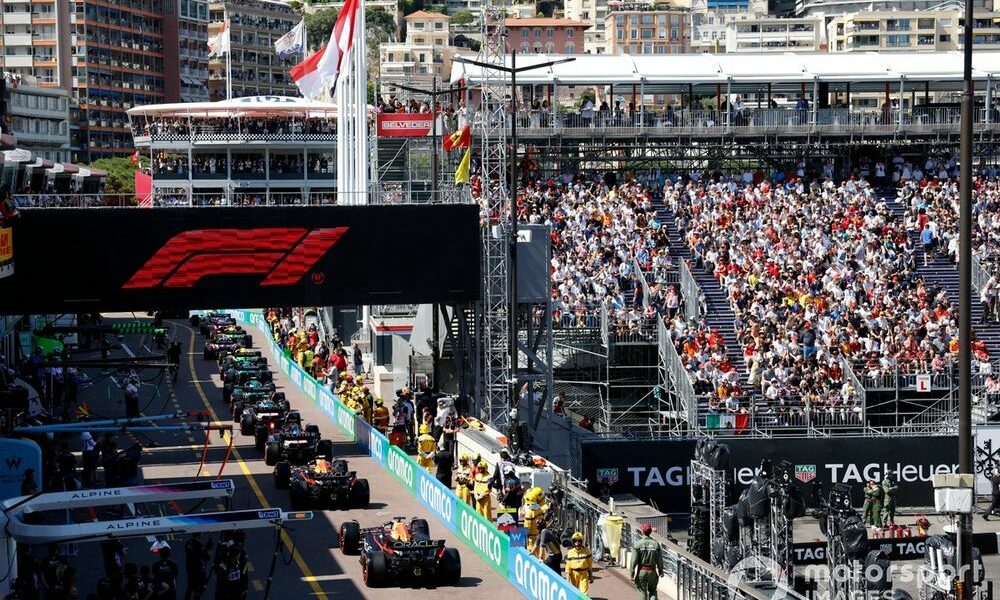Long before the advent of Las Vegas or Miami, Monaco was F1’s marquee event that basked in its own glamour.
Monaco, which first saw grand prix racing in 1929, and Formula 1 helped put each other on the map in the ’50s and ’60s. The grand prix built up a worldwide renown that has made it synonymous with the world championship and part of the Triple Crown of motor racing events alongside the Indianapolis 500 and Le Mans 24 Hours.
Its challenging street circuit was the site of many exploits and incidents that became part of F1 folklore, ranging from Alberto Ascari’s fraught dive into the marina in 1955 to Ayrton Senna’s string of six wins that helped cement his legacy. The Brazilian’s run was interrupted by an even more famous retirement from the lead in 1988 that followed what he described as an out-of-body experience when he destroyed the field in qualifying.
F1 has changed a huge amount since its humble beginnings in 1950. Monaco? Not so much.
As Formula 1 cars became quicker and quicker, its grands prix became ever more starved of action as each year the same questions are asked about whether or not the 3.3km rollercoaster ride still belongs on the F1 calendar.
Misgivings around Monaco are not just limited to its boring parades on Sunday, though. As many people who work at the event will attest, the cramped surroundings can create a tough working environment.

Sergio Perez, Red Bull Racing RB20, Max Verstappen, Red Bull Racing RB20, in the queue to leave the pits
Photo by: Glenn Dunbar / Motorsport Images
Monaco’s iconic status also entrenched the race organisers’ attitude that their crown jewel remains indisputable, explaining their reluctance to get on board with F1’s needs in the Liberty Media era.
Ahead of a tricky 2022 contract renewal cycle, Monaco finally made some concessions to F1 over a more proportionate hosting fee, trackside signage and handing over the TV broadcast from its own crew to F1’s regular team.
The event is out of contract again after 2025, but it is now expected a new deal will be easier to pull off thanks to the progress that was made ahead of signing its current three-year contract.
While F1’s most pressing gripes have been solved, the lack of on-track spectacle is still the elephant in the room, with viable solutions to liven up the race few and far between.
“With the size and the weight of these cars, they’re too big to be racing around these streets,” said Horner. “We race here because of the history, the heritage, and it’s a phenomenal venue. But by and large, this race will be won in qualifying.
“To have a really entertaining race here, then we ought to look at at least the possibility of opening up some areas that could potentially create at least an overtaking opportunity. To protect the next 70 years here, I think that there needs to obviously be some evolution.”
If modern-day F1 cars struggle to overtake in Singapore, Budapest or Imola, then even suggestions like extending the run towards the tunnel and the chicane are unlikely to be a panacea, and options to make other meaningful changes appear limited too.
But it is Monaco’s unrivalled one-lap thrill, coupled with its history, that looks set to be the event’s saving grace for now.

Max Verstappen, Red Bull Racing RB20
Photo by: Sam Bloxham / Motorsport Images
And while the drivers are aware there is a hefty price being paid on Sundays – during his press conference Hamilton asked the media how they manage to stay awake during the race – they also remain Monaco’s biggest cheerleaders.
“The feeling of driving around here and having that opportunity to push a car to the limit is just so awesomely scary and beautiful and insane and intense,” said Ricciardo as he looked set to run out of adjectives to describe a lap around the principality.
“It is like one of life’s greatest experiences. It is hard to match a feeling like that. I’ve got butterflies in my tummy and it’s only Monaco that produces that.
“Do I wish the Sunday could be a bit different or cooler? Yes. But as a weekend and the atmosphere and what it does to us drivers, I don’t think that will ever be matched.”
If you ever get the privilege of watching a session trackside, you will soon understand why. The speeds and sudden direction changes with which today’s Formula 1 cars navigate the swimming pool section feel like they defy the laws of physics.
The entire third sector is marked by shredded advertising banners from the constant battering they receive by the cars. Brush them ever so slightly on your way to pole and you are a hero. Get it wrong by an inch and it’s game over.
Monaco may be the slowest track on the calendar, but the sense of speed and the drivers’ commitment to perfection is perhaps the highest.
With high-profile additions in Miami and Las Vegas, F1 has sought to replicate Monaco’s glitz and glamour elsewhere. But as Sainz said, “nobody beats Monaco and no one ever will” as an event.
Despite its obvious flaws, it seems likely to stay that way.

